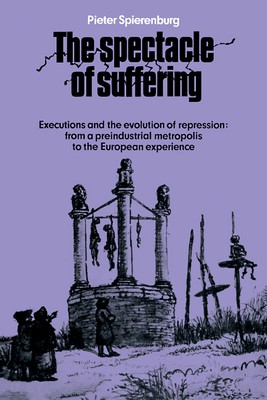
- We will send in 10–14 business days.
- Author: Pieter Spierenburg
- Publisher: Cambridge University Press
- ISBN-10: 0521089646
- ISBN-13: 9780521089647
- Format: 15.2 x 22.9 x 1.7 cm, minkšti viršeliai
- Language: English
- SAVE -10% with code: EXTRA
Reviews
Description
Present-day unease about the treatment of lawbreakers has deep historical roots. Pieter Spierenburg traces the long period of evolution that gave rise to the modern debate about punishment, and relates it to the development of Western European society. He argues that two elements, the public character of punishment and its infliction of physical suffering, were originally at the heart of the penal system. From the sixteenth century onwards, however, these elements began to decline. Spierenburg explains that this development reflected a wider change of attitudes which, in turn, was related to changes in society at large. The book deals successively with each of the parties involved in public executions: the hangman, the magistrates, the crowd, and the victim. Among the themes dicussed are the infamous reputation of the excutioner, the functions of ceremonial, and the social background of those about to suffer.
EXTRA 10 % discount with code: EXTRA
The promotion ends in 21d.23:56:37
The discount code is valid when purchasing from 10 €. Discounts do not stack.
- Author: Pieter Spierenburg
- Publisher: Cambridge University Press
- ISBN-10: 0521089646
- ISBN-13: 9780521089647
- Format: 15.2 x 22.9 x 1.7 cm, minkšti viršeliai
- Language: English English
Present-day unease about the treatment of lawbreakers has deep historical roots. Pieter Spierenburg traces the long period of evolution that gave rise to the modern debate about punishment, and relates it to the development of Western European society. He argues that two elements, the public character of punishment and its infliction of physical suffering, were originally at the heart of the penal system. From the sixteenth century onwards, however, these elements began to decline. Spierenburg explains that this development reflected a wider change of attitudes which, in turn, was related to changes in society at large. The book deals successively with each of the parties involved in public executions: the hangman, the magistrates, the crowd, and the victim. Among the themes dicussed are the infamous reputation of the excutioner, the functions of ceremonial, and the social background of those about to suffer.


Reviews